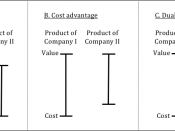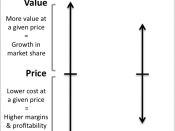As internationalisation of the world economy continues to gather pace all aspects of management have to be seen in a global context. This is especially true for corporate strategy. Even if an organization does not plan to import or to export directly, management has to look at the international business environment, as it will inevitably have an affect on their business activities. They have to consider how the actions of competitors, buyers, sellers, new entrants or providers of substitutes goods may influence the domestic market. Porters (1985), Five Forces Model allows management to analyse the industry in which they operate, and thus they can develop their corporate strategy in line with their findings.
In addition, Porters Diamond of National advantage allows us to analyse why some nations are more competitive than others and also why some industries are more competitive than others. Porter suggests that the national home base of an organisation plays an important role in shaping the extent to which it is likely to achieve advantage on a global scale.
This home base provides basic factors, which support or hinder organizations from building advantages in global competition.
Porter distinguishes four determinants as seen in the 'Diamond':
1. Factor Conditions
ÃÂ This is the situation in a country regarding production factors, like skilled labor, infrastructure, etc., which are relevant for competition in particular industries.
These factors can be grouped into human resources (qualification level, cost of labor, commitment etc.), material resources (natural resources, vegetation, space etc.), knowledge resources, capital resources, and infrastructure. They also include factors like quality of research on universities, deregulation of labor markets, or liquidity of national stock markets.
These national factors often provide initial advantages, which are subsequently built upon. Each country has its own particular set of factor conditions; hence, in each country will...



Well written
Loved this essay - not too much detail to sink into yet enough of a description to promote understanding of the model.
0 out of 0 people found this comment useful.